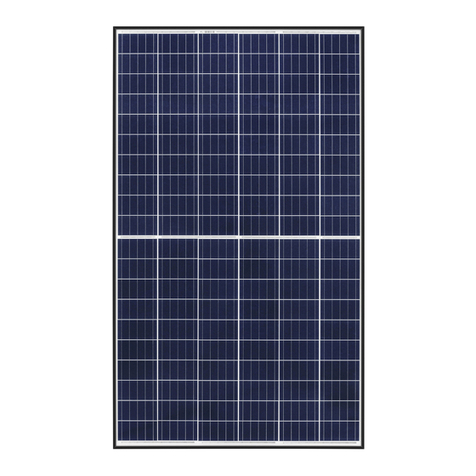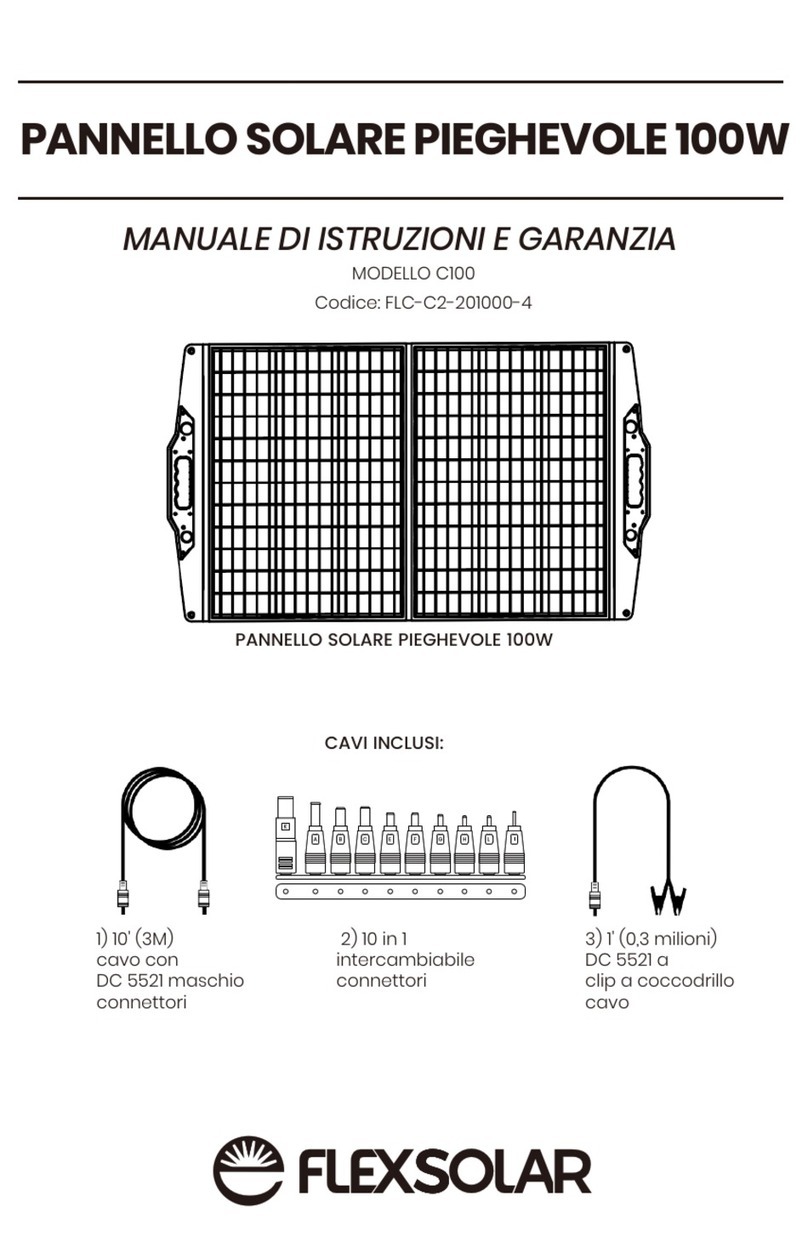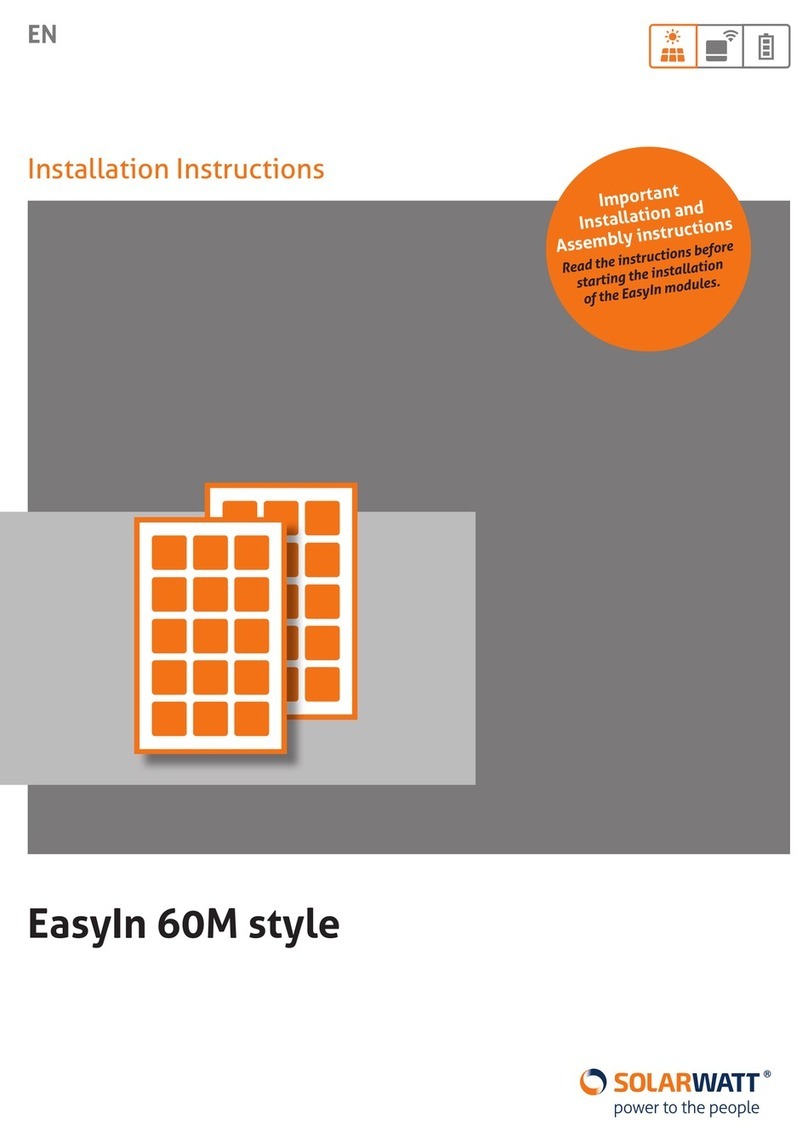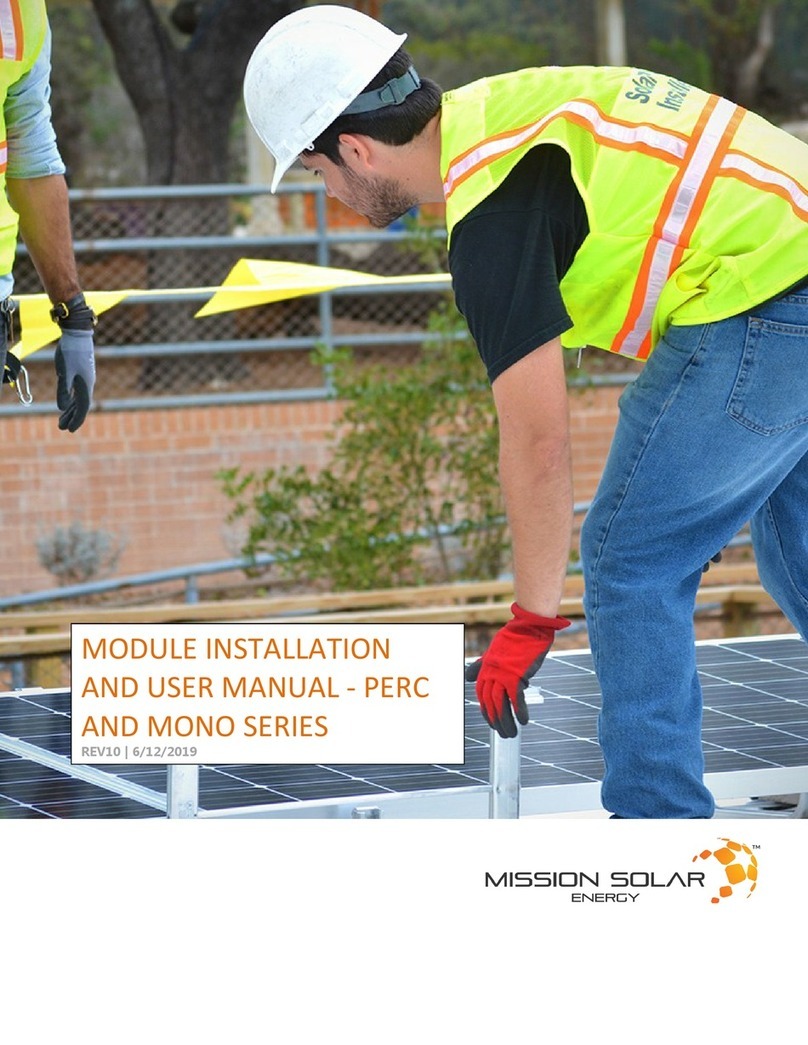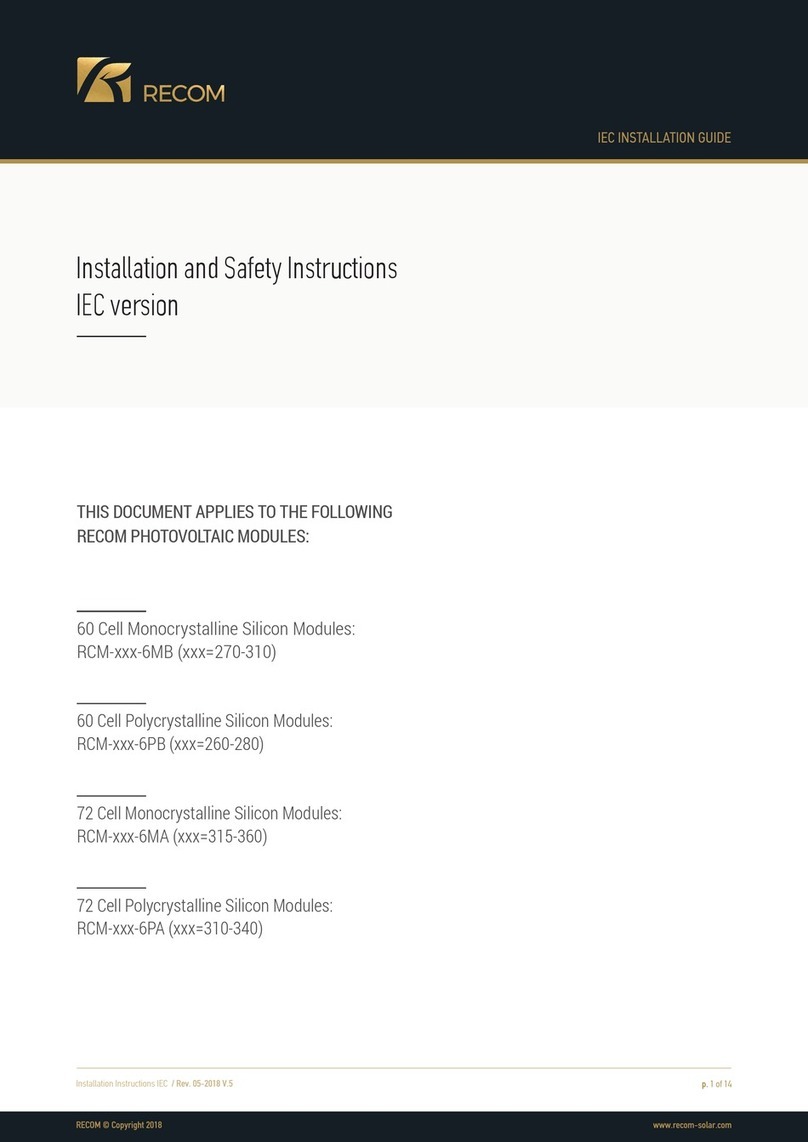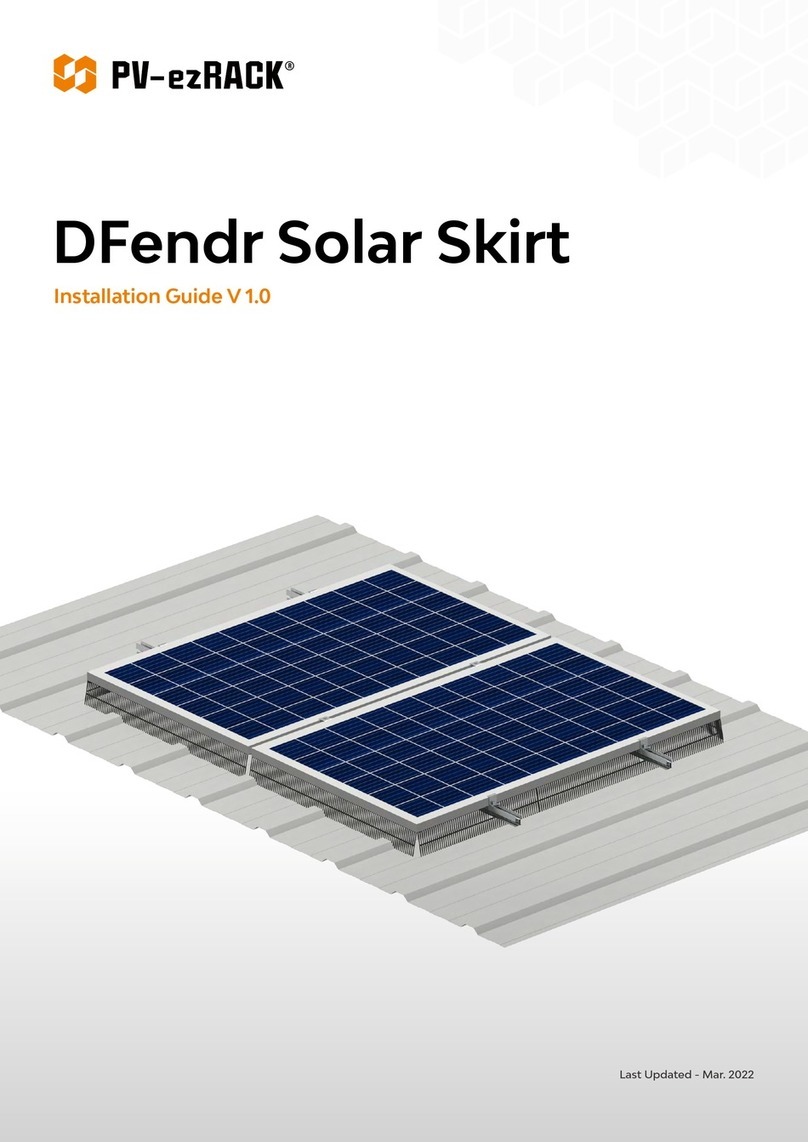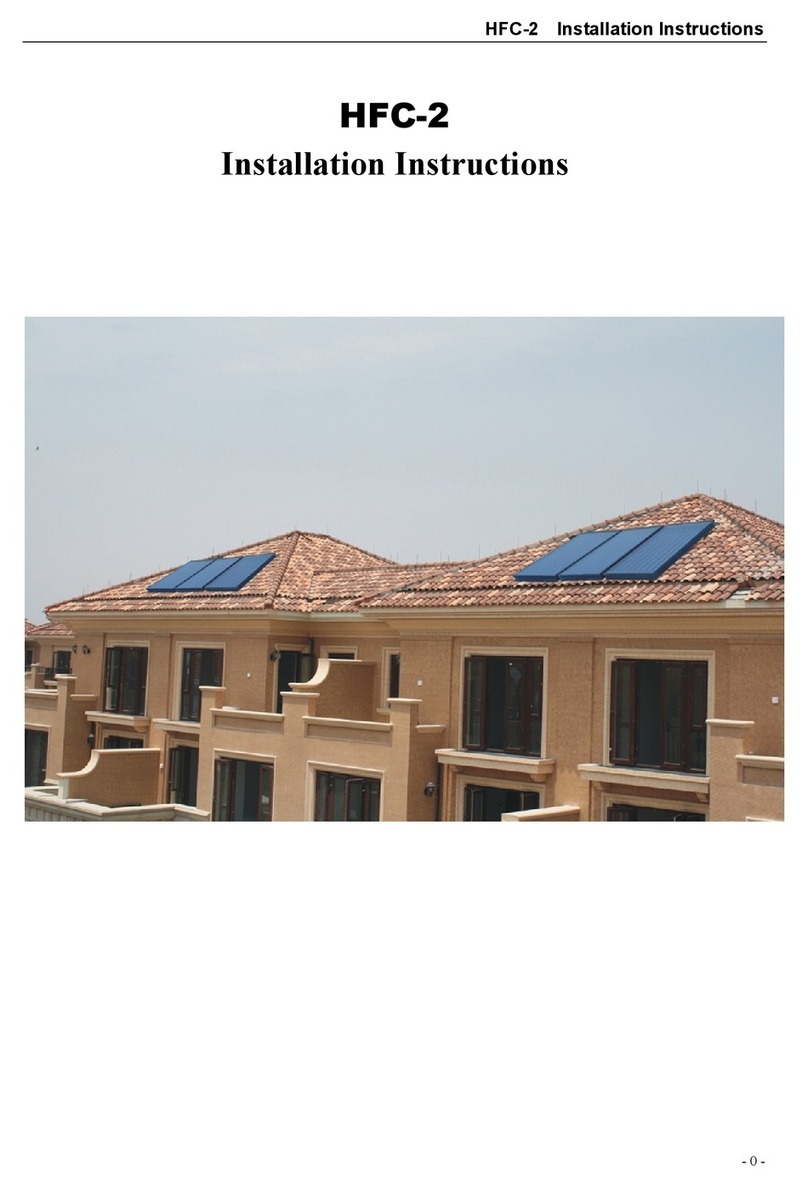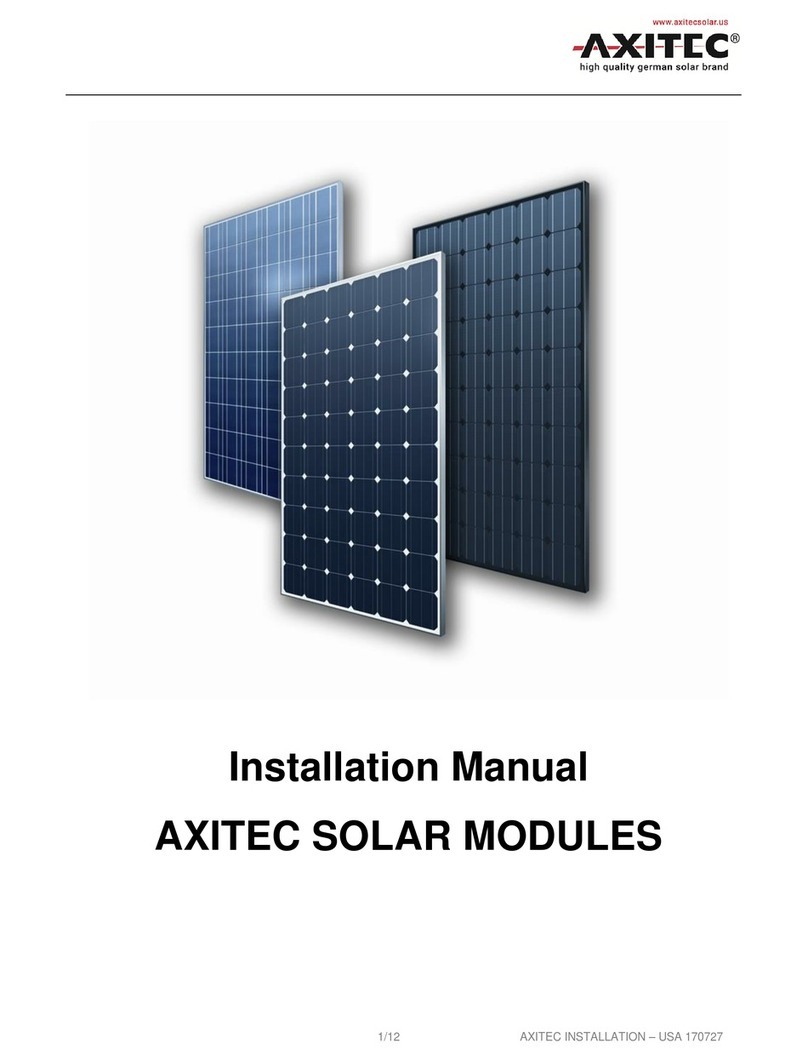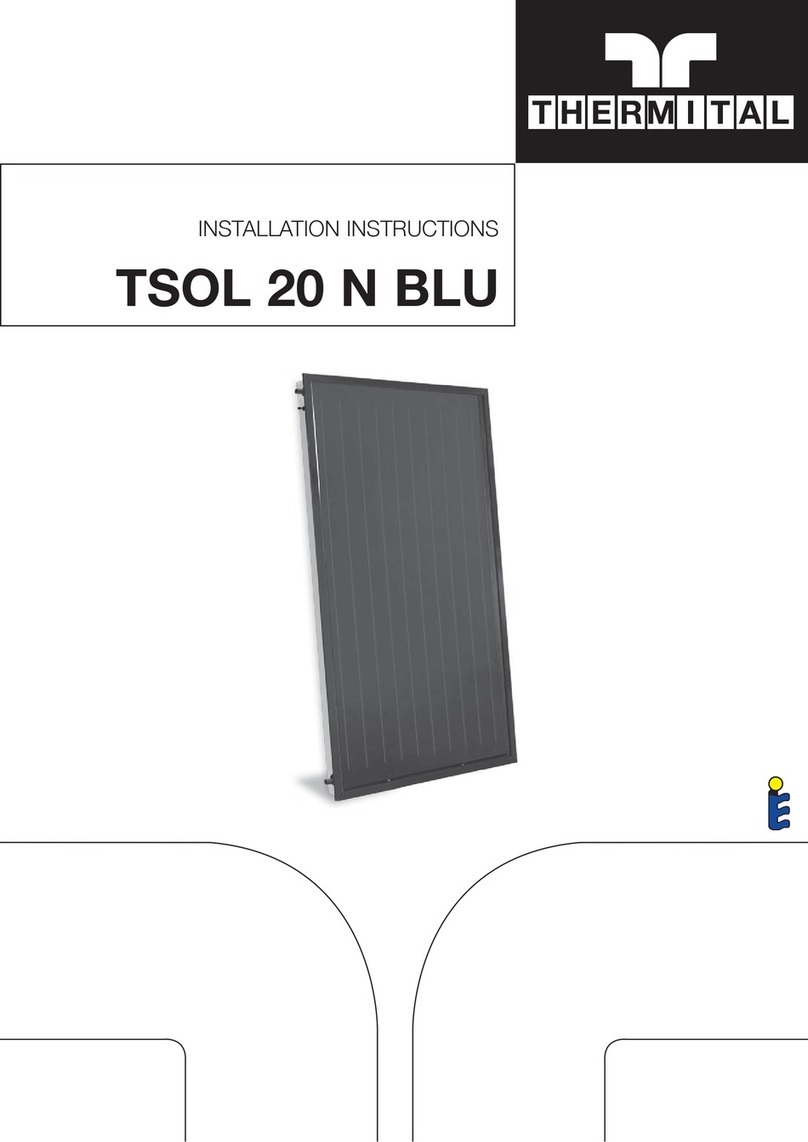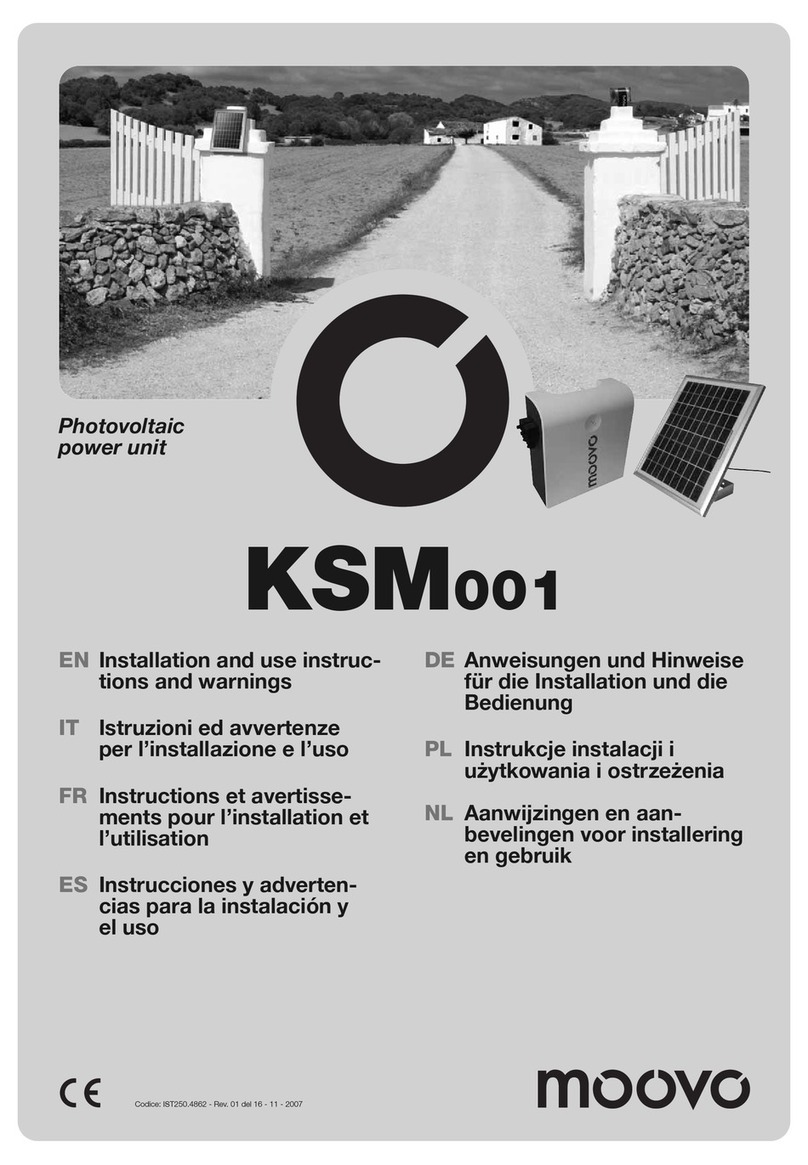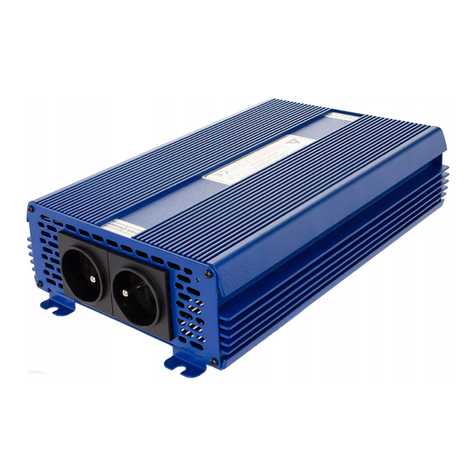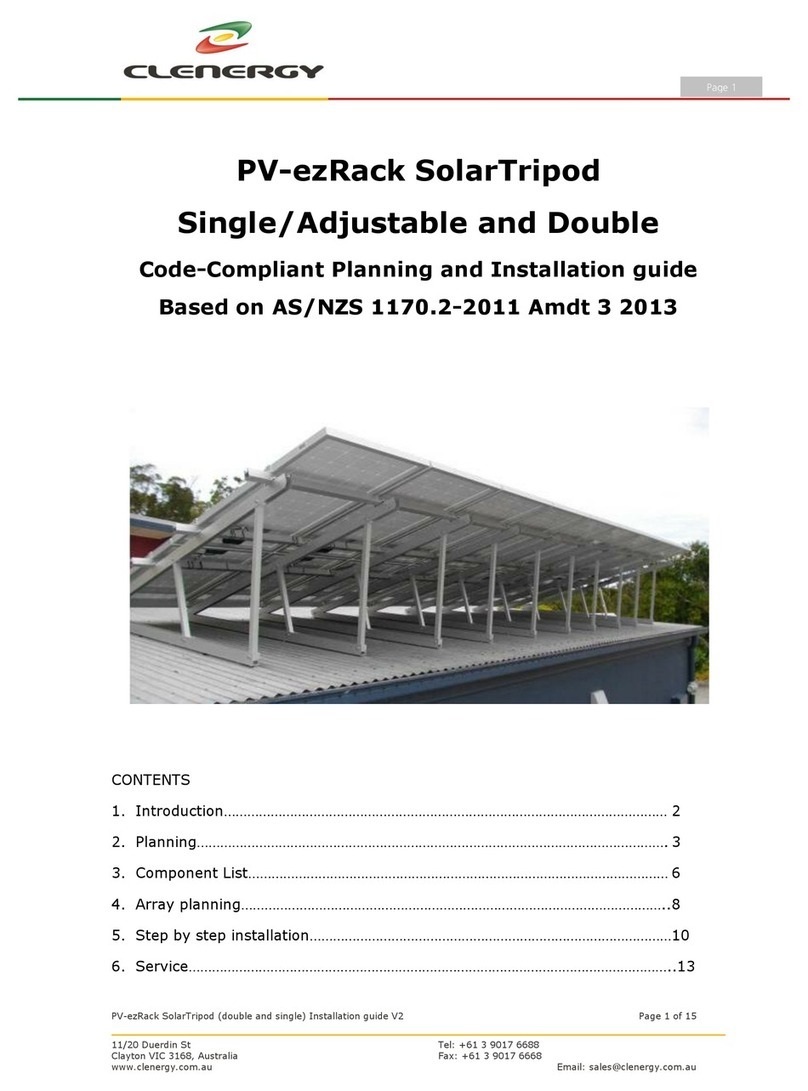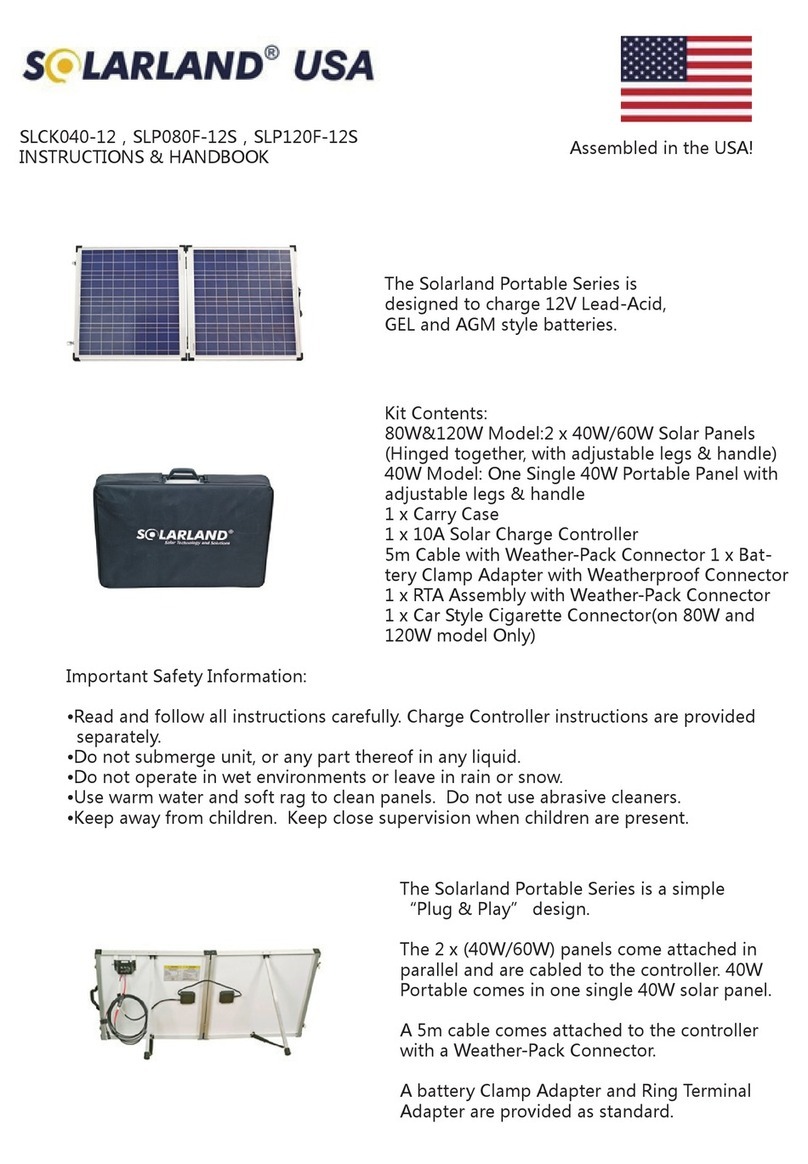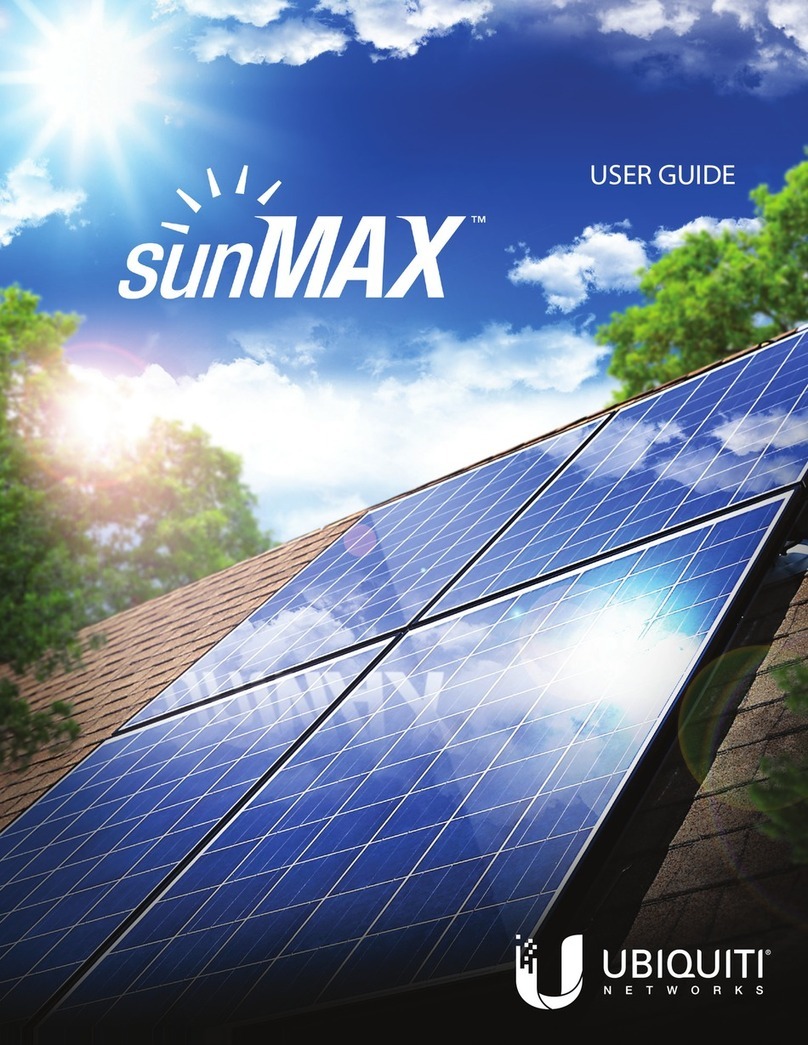
UL AND IEC INSTALLATION GUIDE
p. 5 of 14
Installation Instructions UL-1703 and IEC / Rev. 05-2018 V.5
RECOM © Copyright 2018 www.recom-solar.com
Safety
The following safety guidelines and best practices should be followed at all times:
• All installations must be performed in compliance with all applicable regional and local electrical codes or
other applicable national and international electrical standards.
• Use only insulated tools during installation, troubleshooting and maintenance of the modules.
• Wear suitable protection to prevent direct contact with module’s electrical output and mechanical sharp
edges.
• Cover the front of the modules with an opaque material to stop production of electricity when installing or
working with a module or wiring.
• Modules connected in a series should not be disconnected under illumination. Disconnecting modules un-
der illumination may cause electrical arcing, which may result in burns, res or other injuries and damages.
• Troubleshooting should include planning, checking, disconnecting, cause seeking, replacement and record
keeping.
• Do not install or handle the modules or their components when they are wet or during periods of high wind.
• Do not attempt to disassemble, repair or open any part of the module; including the junction box or sub-com-
ponents.
• Do not articially concentrate sunlight on a module.
• Do not install or handle broken modules. If a module is broken, or the back sheet is torn, contact with the
surface or frame can cause an electrical shock.
• Do not wear rings, jewelry, watches or other metallic items while working with photovoltaic modules.
Maintenance
Check the modules for any damages to the glass surfaces and frames on a regular basis. Routinely inspect
all modules for safe electrical connections, sound mechanical connections, and for any shading or corrosion
issues. If dirt or debris becomes built-up clean the glass using only a soft cloth, with a mild, non-abrasive de-
tergent and water. RECOM recommends using mild cleaning liquids; a neutral pH in the range of 6.0 to 8.0 is
recommended. Chemicals with pH less than 6.0 or greater than 8.0 should be avoided as it may damage the
glass surface and/or the anti-reflective coating. Please consult with the system designer to determine the best
cleaning and inspection schedule based on local environmental conditions.
Do not power wash, use harsh cleaning materials or coarse objects such as scouring powder, steel wool, scrap-
ers, blades or other sharp instruments to clean the module. Use of any such methods and materials will void
the product warranty. Do not wash modules with water that is more than 20 0C cooler than the surface of the
module. Doing so can cause the glass to crack.
